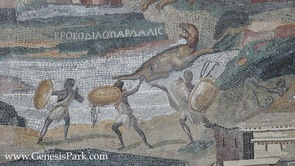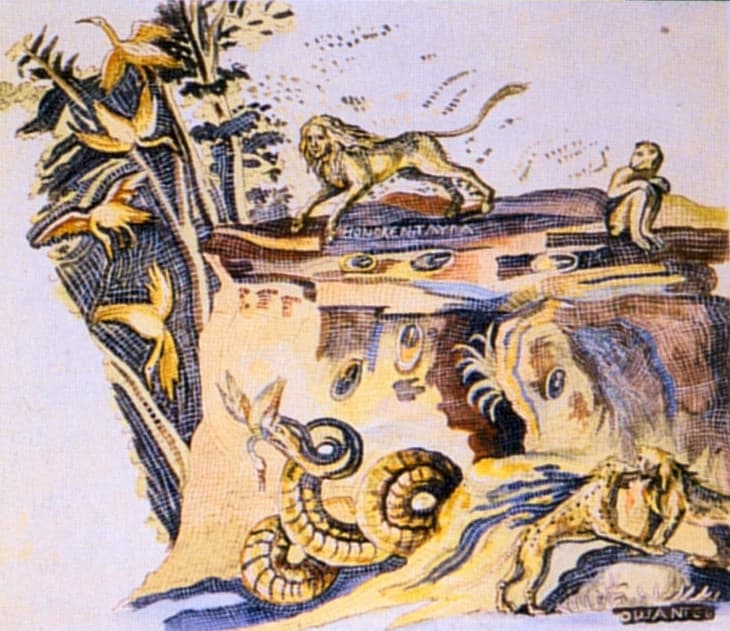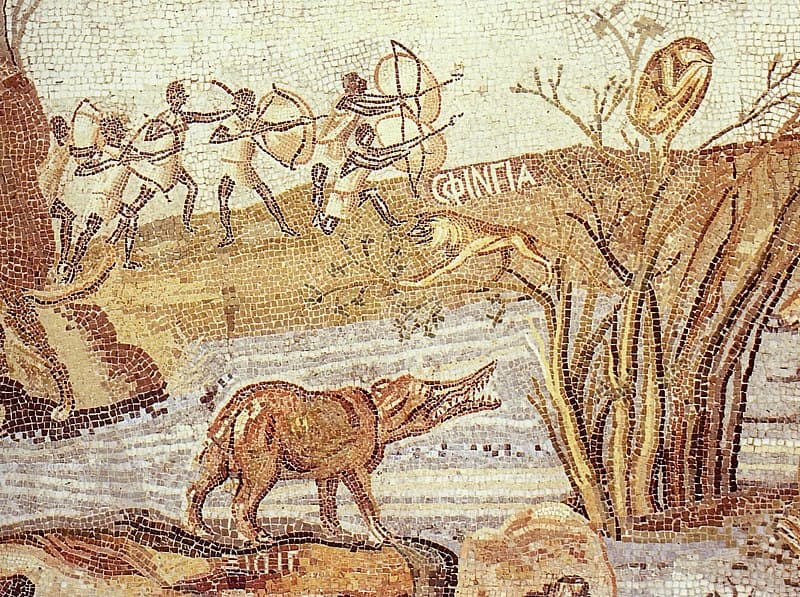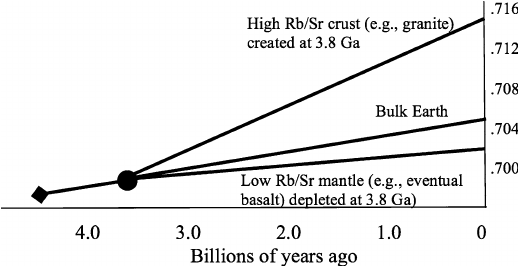Precambrian Pollen Problems (invoked earlier in this thread)
Two supposed examples of more modern remains of organisms in Precambrian rocks have current popularity in young-earth circles – bits of wood and insects reported from the salt of the Salt Range in Pakistan, and reported pollen out of the Roraima Supergroup in Guyana. There are several problems with these claims, however.
One basic problem is consistent standards. Young-earth sources claim that old-earthers are hushing these up to conceal the existence of problems with an old-earth view. But if this were true, what should we conclude about all the problems for a young earth that are never mentioned by young-earth advocates? Also, finding something unexpected is a great shortcut to scientific fame – good evidence of such fossils in these layers would be a major discovery, and the fact that more information hasn’t showed up is likely to reflect that no one has found these convincing enough to be worth pursuing. Similarly, there is inconsistency in claiming that a couple of perceived problems for standard geology allows throwing all of it out, while ignoring both the large number of things that standard geology explains well and the many problems for a young-earth position. There is a highly consistent pattern throughout the geologic record of particular types of fossils being found in particular layers. Exceptions deserve to be investigated, but the best explanation is the one that addresses all of the evidence the best. Kuhn’s “paradigm shift” model badly neglects this aspect of science. To become successful, a new scientific model needs to explain more than the previous model did – just finding a problem is not enough to justify a change. A similar error is prevalent in political advertising these days. Claiming that the other candidate is awful should not be enough to get elected – it should be necessary to demonstrate that your own candidate is actually better.
Another problem is that many similar claims to find out of place fossils, promoted by young-earth advocates are wrong. George McCready Price, the main originator of the modern attempts to claim that geology is overwhelmingly incorrect, cited several supposed examples of fossils appearing in some layers but missing from ones in between in his Common-Sense Geology. Conveniently for me, he selected clams as a particular example to cite. I know that the clams that he says were missing from some layers actually were well-documented as being in those layers at the time that Price wrote. Price’s research was definitely inadequate. This pattern of inaccuracy on the part of young-earth sources doesn’t make one optimistic that a new claim will be better.
There are processes that can put a fossil apparently out of place. These have to be taken into account in determining whether any particular occurrence is really unusual or not. Reworking is the process where an older fossil is washed out of one layer and then deposited into a new one. For example, there are many places around the world where fossils are washing out of cliffs by a beach and getting mixed in with the modern beach deposits. A hole or crack can let younger fossils fall down in among older material. For example, a famous set of skeletons of the dinosaur Iguanodon were found by Belgian coal miners. The coal is Carboniferous, far older than the Cretaceous dinosaurs. But the dinosaurs are not in the coal. Instead, they are in a large sinkhole, filled with Cretaceous sediment. Either in life or after death, the dinosaurs fell into the hole and were buried. For small fossils such as pollen, contamination must also be considered. As allergy sufferers know all too well, pollen spreads all over the place. Making certain that pollen grains or other material actually comes from a rock sample rather than from the air or other sources requires appropriate precautions – were the samples adequately cleaned? Do the “fossils” match the rock, or are they fresher-looking? (For example, a specimen of a very modern-looking fly in amber was noticed to have a crack going all the way around the middle of the piece of amber – someone got a piece of amber, cut it in half, stuffed in a fly, and sold it for a higher price). Do you find just a few, or does everyone studying the same layer find lots of them? Do the rocks have obvious cracks or other evidence of change that could allow mixing? These are some clues that can help to distinguish between contamination and authentic finds.
Another problem is that both of these claims raise problems for other young-earth arguments. Young-earth advocates are surprisingly quick to make one argument and then contradict it in their next argument, if not within the same argument. For the Salt Range salt deposit, the salt is incompatible with a global flood. Salt is deposited by the evaporation of salty water and is dissolved when more water is available. The only way to deposit salt during a global flood is if the floodwaters are extremely hypersaline, killing practically all aquatic life except for certain bacteria and archaea. Otherwise, you need to have a dry setting for the salt deposit (including the option of some sort of salt lake surrounded by land). Additionally, the salt deposit has physical and chemical layering. Changing isotopes and mineral types through the section (Strauss et al. 2001; Mazumdar & Strauss, 2006) requires time for the seawater to change as the minerals are being deposited. Some of the changes in isotopes can be traced globally, requiring enough time for changes in ocean chemistry to spread around the world. At modern-day rates of currents, it takes about 300 years for chemical shifts to spread throughout the ocean. That could be slower or faster under other ocean conditions, but speeding it up to happen within a fraction of a day, as a flood geology model would imply, is rather difficult – such water movements would require enough energy that you’re vaporizing the earth rather than just moving water.
The Roraima rocks, unlike the Salt Range ones, are highly metamorphosed, with minerals indicating temperatures around 500 degrees C or more. But pollen, like some of the so-called “soft tissue” fossils, is made of tough organic molecules (mostly cellulose), not “hard” minerals. Claiming that the pollen from these rocks really belongs there is an assertion that “soft” tissues can survive some extreme conditions. Also, the formation of the new minerals at high temperature takes a while. The existence of minerals formed by sustained heat applied to previously-deposited sedimentary minerals requires a considerable amount of time, and there is no room for anything to happen gradually in a young-earth model.
Since the initial report of biological materials in the salt at one mine in the Salt Range beds, further study strongly indicates that they are contamination. Salt is somewhat squishy – it can slowly bend and flow, somewhat like ice in a glacier. It also easily dissolves and re-precipitates. So stuff that gets on the surface of a salt deposit can work its way into the salt, and the initial identification of the organic bits as fossils rather than as modern contamination was a mistake.
There is a detailed discussion of the reports of fossils out of the Roraima Supergroup at Responding To Creationism - Roraima . Two reports of fossils from the group exist, but both are not well-documented, making interpretations challenging. The first (Bailey, 1964) was corrected by Allen (1967) – the supposed fossils were actually structures from volcanic ash. The second, Stainforth (1966), was popularized in young-earth circles by Silvestru (2012). Stainforth’s material was examined by palynological experts, but no firm conclusion was reached about the age or source of the pollen. The pollen did not seem to be highly altered, as would be expected if it were present in the original rock before it was metamorphosed. One worker reported that the pollen abundance went down considerably if the samples were better cleaned. Both of these observations strongly point to the pollen not actually coming from the Precambrian rocks. Many further studies have been done on the Roraima supergroup, but not finding more pollen, again suggesting contamination is likely (although someone looking at other aspects of the rock might not look for pollen). [bibliographic references given on the cited webpage]
Harald Strauss, Dhiraj M. Banerjee, Virendra Kumar. 2001. The sulfur isotopic composition of Neoproterozoic to early Cambrian seawater — evidence from the cyclic Hanseran evaporites, NW India. Chemical Geology, 175(1–2):17-28. https://doi.org/10.1016/S0009-2541(00)00361-2.
A. Mazumdar, H. Strauss. 2006. Sulfur and strontium isotopic compositions of carbonate and evaporite rocks from the late Neoproterozoic–early Cambrian Bilara Group (Nagaur-Ganganagar Basin, India): Constraints on intrabasinal correlation and global sulfur cycle. Precambrian Research, 149(3–4):217-230. https://doi.org/10.1016/j.precamres.2006.06.008.



